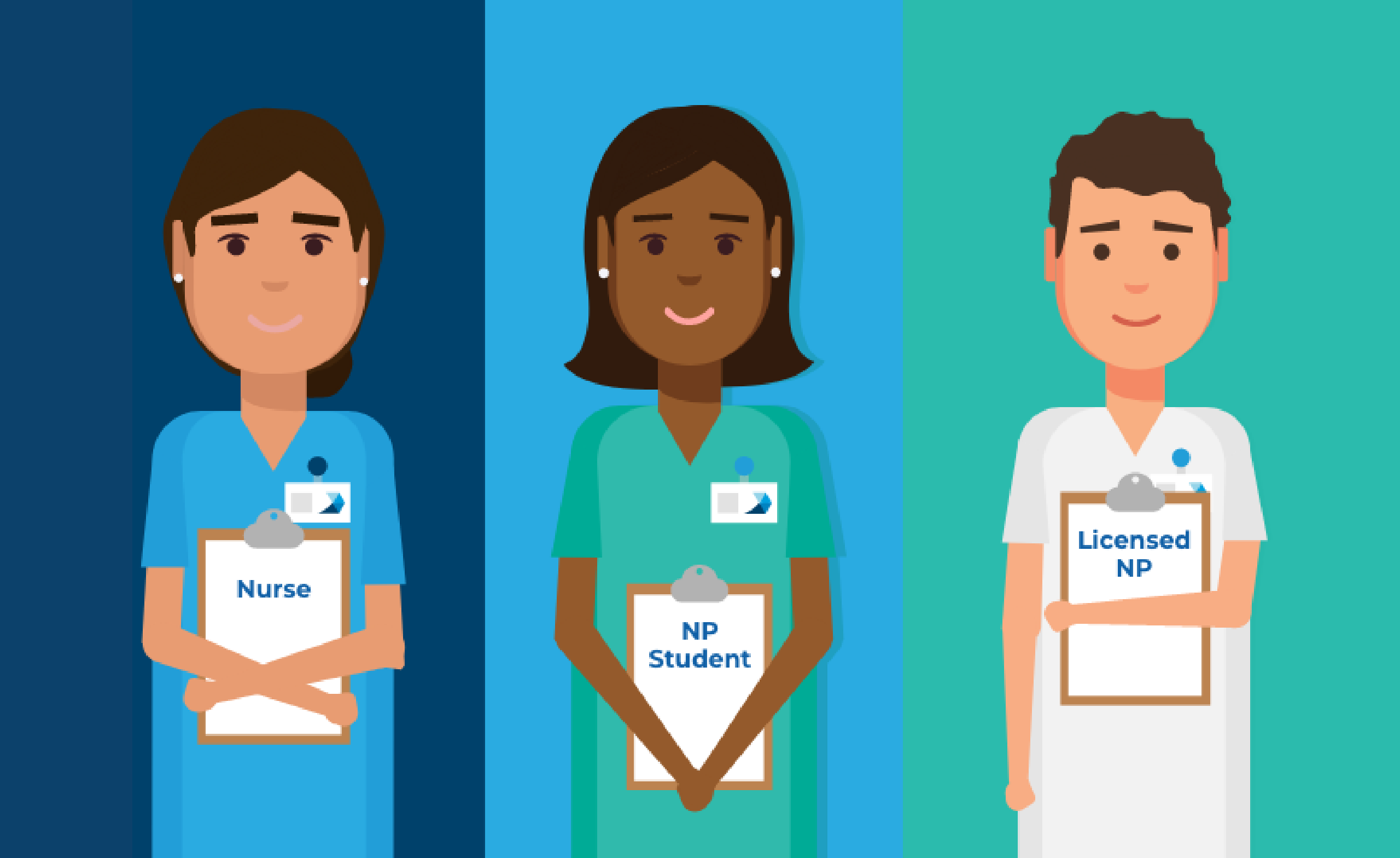Five Ways to Accelerate Nurse Practitioner Students’ Education
Challenging, difficult, demanding—the nurse practitioner (NP) student’s journey toward certification is not without hurdles. Many are overwhelmed by the sheer amount of advanced scientific facts and complex technical concepts they need to learn, remember, and recall. The more students struggle in their learning, the less prepared they are for the AANP® and ANCC® certification exams, and the lower their chances of getting a first-time pass.
Institutions can help NP students improve academic performance, confidence, and exam success by overcoming learning obstacles. Most students rely on passive learning methods such as rote memorization, but the efficacy is limited and short-lived. On the other hand, active learning has been shown to be more effective for an engaging and efficient classroom experience, and also improves long-term memory.
Audio-visual platforms like Picmonic, powered by TrueLearn, is an example of an active learning resource that is research-proven to help students improve long-term memory retention by 331% and test scores by 50%.

Here are five ways Picmonic and TrueLearn help smooth the educational path for NP students to achieve success on the AANP® and ANCC® exam and advance toward certification.
Simulates AANP® and ANCC® exams and predicts readiness with an effective learning loop
Picmonic and TrueLearn are integrated to create a powerful learning loop. Students study facts, concepts, and topics and practice recall via Picmonic, then test critical thinking and ability to apply knowledge by answering TrueLearn’s high-quality board-style questions that mimic the AANP® and ANCC® exams. Students repeat this back-and-forth process, strengthening their knowledge retention and retrieval over and over to build mastery of concepts and knowledge application continuously. This approach helps both students and educators identify gaps and areas that need improvement and encourages in-depth understanding and application of knowledge.
Enhances the memory-building process with audio-visual mnemonics
Science has spoken—we remember things better if they are presented with audio-visual cues such as images that have humorous associations and are weird, odd, or unique. Picmonic’s audio-visual mnemonics fit the bill perfectly: they feature cartoonish characters linked by funny stories in short videos—both educational and story-based—that transform hard-to-learn facts and complex topics into easy-to-remember, bite-sized information.
Supports continued mastery of concepts, enabling the development of clinical judgment and decision-making skills
Picmonic combines the powerful effects of audio-visual mnemonics with board-style practice questions powered by TrueLearn to let NP students self-assess to determine and remediate knowledge gaps in preparation for the AANP® and ANCC® exam. The rapid review of multiple-choice questions encourages the practice of low-stakes recall, which helps NP students reinforce what they learn and improve knowledge retention. Additionally, spaced repetition quizzing enables students to continuously strengthen and build on the mastery of concepts that they need to succeed. If students are mastering content and retaining the information long-term, then educators can focus more on guiding students toward developing clinical judgment and decision-making skills. This is important for optimizing AANP® and ANCC® exam outcomes as both exams place emphasis on clinical application.
Assesses knowledge application and leverages key and objective data to enable tailored remediation
Picmonic and TrueLearn have built-in data analytics and AI algorithms that perform several key functions to strengthen learning and application of knowledge, as well as surface key insights to drive optimal outcomes. Using real-time data, students and educators can observe learning patterns, track progress, identify content weaknesses and remediation needs, pinpoint gaps in comprehension, and prompt reviews of the right information at the right time. Educators can then leverage these insights to identify at-risk students, gaps or redundancies in the curriculum, and tailor remediation by providing appropriate resources and support to NP students where and when they need them the most.
Supports flexible and efficient learning to cater to individual needs
One of the main struggles NP students face is balancing a full-time job with multiple personal commitments that vie for their time. Allocating time to study and mustering focus to absorb lessons only add to their challenges. What would help is a flexible, versatile learning system that caters to their unique needs, eases their stress, and supports their advanced learning at the same time.
Picmonic resolves this by letting educators select and assign lessons to students that align with the curriculum or areas of identified remediation. Students can easily access the lessons on a computer or mobile phone too. This allows them to coordinate their studies around their busy schedules and engage the relevant content in an efficient and effective manner.
Together, Picmonic and TrueLearn have helped over a million students boost their performance in NP school and on the AANP® and ANCC® exams. Picmonic’s 1,700+ lessons and 20,000+ low-stakes practice questions combined with TrueLearn’s 1,800+ board-style test items cover thousands of topics found in the NP curriculum and tested on the AANP® and ANCC® exams, making them effective and efficient teaching, studying, and assessment tools. NP educators can integrate Picmonic videos seamlessly into lesson plans, increase test-readiness with TrueLearn, and implement improvement initiatives based on real-time data generated on both platforms to create a more active and engaging classroom experience and improve course, program, and AANP® and ANCC® exam outcomes.
Find out more about how Picmonic and TrueLearn can support your faculty and improve NP student outcomes. Speak to a representative or schedule a demo today.
*AANP® and ANCC® are trademarks of the American Association of Nurse Practitioners Certification Board (AANPCB) and the American Nurse Credentialing Center (ANCC) respectively. This content is not endorsed or approved by AANPCB or ANCC.


